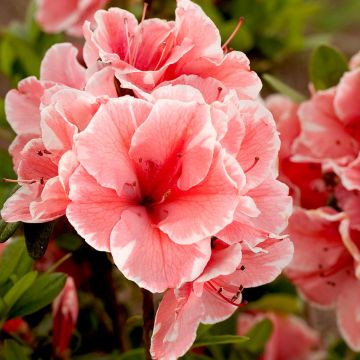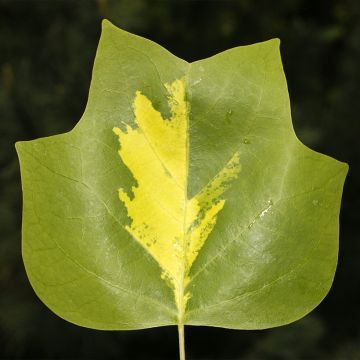Shipping country and language
Your country of residence may be:
Your country of residence is:
For a better user experience on our website, you can select:
Your shipping country:
Andorra
Austria
Belgium
Bulgaria
Canada
Chile
Croatia
Cyprus
Czechia
Denmark
Estonia
Finland
France
Germany
Greece
Hungary
Iceland
Ireland
Italy
Latvia
Lithuania
Luxembourg
Malta
Monaco
Netherlands
Poland
Portugal
Romania
Slovakia
Slovenia
Spain
Sweden
Switzerland
United Kingdom
We only deliver seed and bulb products to your country. If you add other products to your basket, they cannot be shipped.
Language:
French
German
Spanish
English
My Account
Hello
My wish lists
Plantfit
Log in / Register
Existing customer?
New customer?
Create an account to track your orders, access our customer service and, if you wish, make the most of our upcoming offers.


Dipelta ventricosa


Dipelta ventricosa


Dipelta ventricosa


Dipelta ventricosa
Dipelta ventricosa
Dipelta ventricosa
Order in the next for dispatch today!
Dispatch by letter from €3.90.
Delivery charge from €5.90 Oversize package delivery charge from €6.90.
More information
This item is not available in your country.
Schedule delivery date,
and select date in basket
This plant carries a 24 months recovery warranty
More information
We guarantee the quality of our plants for a full growing cycle, and will replace at our expense any plant that fails to recover under normal climatic and planting conditions.
Does this plant fit my garden?
Set up your Plantfit profile →
Description
Dipelta ventricosa is a deciduous shrub, rare in cultivation, related to Weigela and Kolkwitzia, with possibly greater ornamental value. It captivates with its spring flowering in clusters of small, richly coloured campanulate flowers in shades of lilac-pink with a bright orange throat that appear on the plant alongside a decorative fruiting, adorned with round, pink bracts. Just like its famous cousins, the rare Dipelta is easy-to-grow in ordinary, moist, even chalky soil. It deserves to be discovered and planted as a specimen but also integrates very well into a group of plants or romantic borders, a flowering hedge, or simply the garden of a plant enthusiast.
Originally from western and central China, the Dipelta ventricosa was introduced to England in 1904 and later distinguished by the Royal Horticultural Society. It belongs to the caprifoliaceae family. This lime-loving shrub has a widely bushy habit and reaches an average of 3m (9 ft 10 in) in all directions, sometimes much more. Flowering occurs in May, in the axils of the leaves and at the end of the branches, in the form of corymbs of 3 flowers. Each bell-shaped flower, is swollen at the base and equipped with two papery, round bracts, 2cm (0.8 in) wide, rich lilac-pink on the outside, lighter on the inside and illuminated by an orange throat. This flowering, unlike that of Dipelta floribunda, is not scented. It is quickly followed by the formation of curious fruits, surrounded by two pretty pink bracts veined with carmine. The deciduous foliage is composed of simple leaves with entire margins arranged oppositely. They are medium green, ovate-lanceolate and have a petiole. Note that the leaves of this species are smaller and narrower than those of Dipelta floribunda.
Hardy to at least -15°C, the Dipelta ventricosa is undoubtedly the most beautiful representative of the genus, even if it lacks fragrance. It thrives in sunny or semi-shaded positions, in moist but well-drained soil. Its unusual and delightful flowering and fruiting surpass in beauty those of its cousins Diervillea, Kolkwitzia, and Weigela, which it also blends well with, in the garden. Plant it as a specimen in front of a mass of larger shrubs with staggered flowering or autumn foliage. In a mass planting give it companions such as Neilia affinis, Hydrangea anomala, and Viburnum, which grow alongside it in the Chinese mountains. Or variegated dogwoods, spireas, ornamental brambles, or a simple mock orange for fragrance. In the background, the very dark foliage of hollies or yews will form a beautiful backdrop for its exotic flowering and provide decoration in winter.
Plant habit
Flowering
Foliage
Botanical data
Dipelta
ventricosa
Caprifoliaceae
China
Other Dipelta
Planting and care
Hardy to at least -15°C (5 °F), Dipelta ventricosa thrives in sunny or partially shaded locations, away from intense rays. Plant it in a deep, ordinary, moist but well-drained soil, with a neutral to slightly alkaline pH, from October to March (excluding the freezing period). This bush requires little maintenance: regular watering during the first few months to help it establish, and then in dry summers during the first 2 or 3 years. You can prune the branches just after flowering to control its size if you wish.
Planting period
Intended location
Care
This item has not been reviewed yet - be the first to leave a review about it.
Haven't found what you were looking for?
Hardiness is the lowest winter temperature a plant can endure without suffering serious damage or even dying. However, hardiness is affected by location (a sheltered area, such as a patio), protection (winter cover) and soil type (hardiness is improved by well-drained soil).

Photo Sharing Terms & Conditions
In order to encourage gardeners to interact and share their experiences, Promesse de fleurs offers various media enabling content to be uploaded onto its Site - in particular via the ‘Photo sharing’ module.
The User agrees to refrain from:
- Posting any content that is illegal, prejudicial, insulting, racist, inciteful to hatred, revisionist, contrary to public decency, that infringes on privacy or on the privacy rights of third parties, in particular the publicity rights of persons and goods, intellectual property rights, or the right to privacy.
- Submitting content on behalf of a third party;
- Impersonate the identity of a third party and/or publish any personal information about a third party;
In general, the User undertakes to refrain from any unethical behaviour.
All Content (in particular text, comments, files, images, photos, videos, creative works, etc.), which may be subject to property or intellectual property rights, image or other private rights, shall remain the property of the User, subject to the limited rights granted by the terms of the licence granted by Promesse de fleurs as stated below. Users are at liberty to publish or not to publish such Content on the Site, notably via the ‘Photo Sharing’ facility, and accept that this Content shall be made public and freely accessible, notably on the Internet.
Users further acknowledge, undertake to have ,and guarantee that they hold all necessary rights and permissions to publish such material on the Site, in particular with regard to the legislation in force pertaining to any privacy, property, intellectual property, image, or contractual rights, or rights of any other nature. By publishing such Content on the Site, Users acknowledge accepting full liability as publishers of the Content within the meaning of the law, and grant Promesse de fleurs, free of charge, an inclusive, worldwide licence for the said Content for the entire duration of its publication, including all reproduction, representation, up/downloading, displaying, performing, transmission, and storage rights.
Users also grant permission for their name to be linked to the Content and accept that this link may not always be made available.
By engaging in posting material, Users consent to their Content becoming automatically accessible on the Internet, in particular on other sites and/or blogs and/or web pages of the Promesse de fleurs site, including in particular social pages and the Promesse de fleurs catalogue.
Users may secure the removal of entrusted content free of charge by issuing a simple request via our contact form.
The flowering period indicated on our website applies to countries and regions located in USDA zone 8 (France, the United Kingdom, Ireland, the Netherlands, etc.)
It will vary according to where you live:
- In zones 9 to 10 (Italy, Spain, Greece, etc.), flowering will occur about 2 to 4 weeks earlier.
- In zones 6 to 7 (Germany, Poland, Slovenia, and lower mountainous regions), flowering will be delayed by 2 to 3 weeks.
- In zone 5 (Central Europe, Scandinavia), blooming will be delayed by 3 to 5 weeks.
In temperate climates, pruning of spring-flowering shrubs (forsythia, spireas, etc.) should be done just after flowering.
Pruning of summer-flowering shrubs (Indian Lilac, Perovskia, etc.) can be done in winter or spring.
In cold regions as well as with frost-sensitive plants, avoid pruning too early when severe frosts may still occur.
The planting period indicated on our website applies to countries and regions located in USDA zone 8 (France, United Kingdom, Ireland, Netherlands).
It will vary according to where you live:
- In Mediterranean zones (Marseille, Madrid, Milan, etc.), autumn and winter are the best planting periods.
- In continental zones (Strasbourg, Munich, Vienna, etc.), delay planting by 2 to 3 weeks in spring and bring it forward by 2 to 4 weeks in autumn.
- In mountainous regions (the Alps, Pyrenees, Carpathians, etc.), it is best to plant in late spring (May-June) or late summer (August-September).
The harvesting period indicated on our website applies to countries and regions in USDA zone 8 (France, England, Ireland, the Netherlands).
In colder areas (Scandinavia, Poland, Austria...) fruit and vegetable harvests are likely to be delayed by 3-4 weeks.
In warmer areas (Italy, Spain, Greece, etc.), harvesting will probably take place earlier, depending on weather conditions.
The sowing periods indicated on our website apply to countries and regions within USDA Zone 8 (France, UK, Ireland, Netherlands).
In colder areas (Scandinavia, Poland, Austria...), delay any outdoor sowing by 3-4 weeks, or sow under glass.
In warmer climes (Italy, Spain, Greece, etc.), bring outdoor sowing forward by a few weeks.









